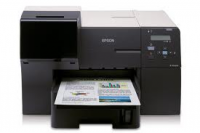 An article highlighted five key pointers for businesses looking to buy printers.
An article highlighted five key pointers for businesses looking to buy printers.
The article on TechRadar noted that while many “think acquiring a business printer is an easy task”, they should “think again”, as while a printer’s “primary feature is to print, there are so many permutations on the market that it would be foolish to assume that one printer is similar to the next one just because it sports almost identical specifications”.
Its first tip is to “identify what you will print the most”, with “text, presentations, graphics or photos” the “four main type of documents you will print at work”. As part of this, you should “determine how many of each roughly you plan to produce on a monthly basis” in order to “get an idea of how much you consumables cost will be”. Considering colour against monochrome, businesses need to ask “whether you will need a colour printer”, with monochrome cheaper, and one of each an option.
The second tip is to estimate costs, and “how much you’re willing to spend”. This goes beyond the printer, because they are “useless without consumables”, so checking the total cost of ownership (TCO) is recommended, with some devices using over one kilowatt of energy a year, for a cost of around $100 (€89). The article offers a formula – TCO (p) = COP + AEC + initial cost of printer; where AEC is average electricity costs, and COP is cost of print.
It adds that “a lower [TCO] is highly desirable” for a cheaper printer “in the long run”, but cheaper machines “usually carry higher consumable costs”, and therefore a “much higher TCO”, while subscription services are available that charge “on how many page you print”, such as HP Inc. The third tip is to consider whether you need a single-function or MFP device, with MFPs often “cheaper than simple printers despite being technically more complex”, though they are “often bulkier”.
Fourth was to “estimate how many pages you plan to print”, with monthly duty cycles presenting the “average number of prints the device is designed to output”, and devices with a higher cycle “usually have much better paper handling capabilities”, meaning “fewer journeys to the printer”. The fifth tip was to “identify who will connect” to the printer, discussing the different ways to connect and how your business will connect to the printer, whether through mobile or wireless connections.
The final tip was to ask yourself “how fast do you want your printer to be?”, with the article pointing out that speeds “depend on how complex documents are how many pages are to be printed”, with memory having “massively changed over the past few years” after printers “used to rely a lot on the host computer for compute and memory resources”.
